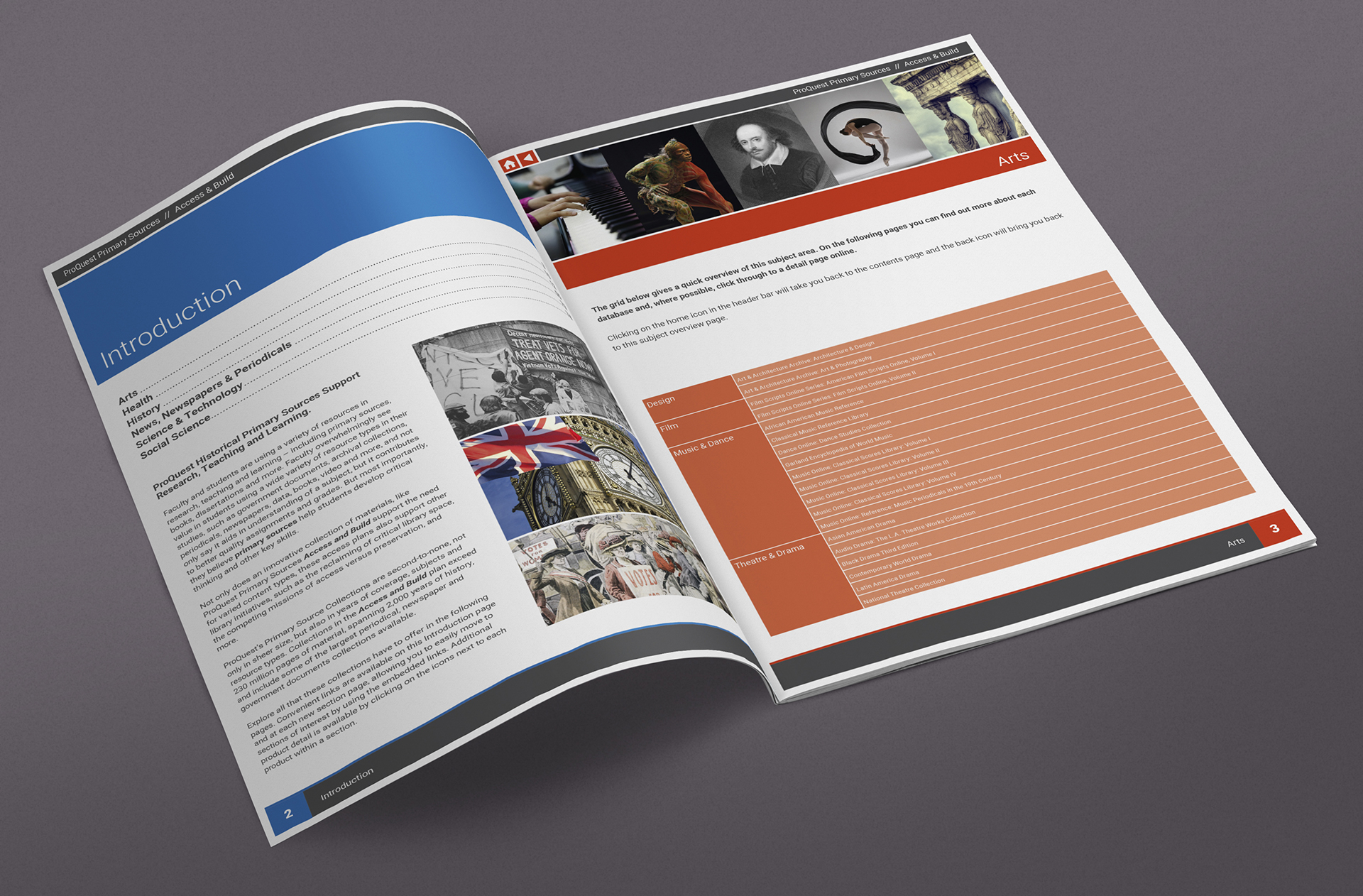
ProQuest Automated Catalogues
Design and development of a database-driven system to automate the creation of a range of catalogues.
ProQuest are an internationally recognized leader in Education Technology with a product portfolio of nearly 400 primary source databases; they have come up with a unique market offering to provide a subset of these products to customers in a variety of buying plans.
This portfolio provides access to over 230 million pages of books, journals, scholarly research and primary sources to libraries and universities around the world.
Their product offering is organised by multiple categories which are then sorted into sub-categories, sub-sub-categories and sub-sub-sub-categories. As you might expect when you have that much content to organize, being able to quickly and easily communicate what database is available in what subject group can get complicated.
We worked with ProQuest a few years ago on the design of a range of catalogues that did just this; with clear, colour-coded sections, easy-to-understand visual representations of each category and a full listing of every database.

For the versions shared digitally via PDF they were also interactive, with multiple page anchors built in to jump to sections and a web link to the relevant page on the ProQuest portal for every database.
These catalogues were a huge success with the sales team and their clients; but there were different plans available across many different regions with different variations of the product offering available in each. This meant that there were more than 30 versions of the catalogue to be produced, twice a year, to keep up with new additions.
This was a labour-intensive process with large amounts of studio time going into manual edits to the master and a lot of cross-referencing and checking against the source database to ensure everything was accurate. We looked at ways to either improve or speed up this production process and came up with an idea that would do both, automation.

This project is a perfect use case for automation as we have a set style and particular design assets used throughout with the only variation being the content. This meant we could set up templates for each asset type in InDesign that could then be populated with data dynamically when connected with a custom database.
The database in question had everything in there for each item; heading and copy of course but also checks for categories and sub-categories, region filters, icons and which URL to link to. All of which meant that, when creating a regional version, the workflow changed from having to manually delete or add items and then cross-check everything to filtering the dataset to the required region, hitting a button and waiting a few seconds for the pages to populate!
The success of the automation of these catalogues means that production is now significantly improved, errors are reduced and new versions, such as customer specific selections, are now a possibility.

If you have any upcoming projects that could use automation or interactive elements and would like to talk with a member of the team let us know via the contact page.
CLIENT:
ProQuest
SERVICES:
Graphic Design
Strategy
Automation





